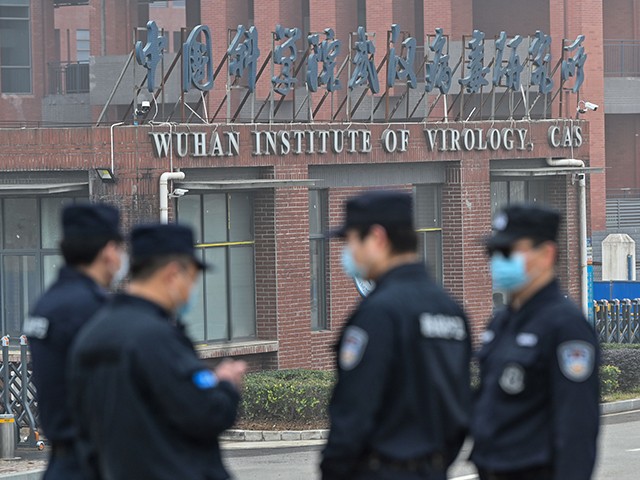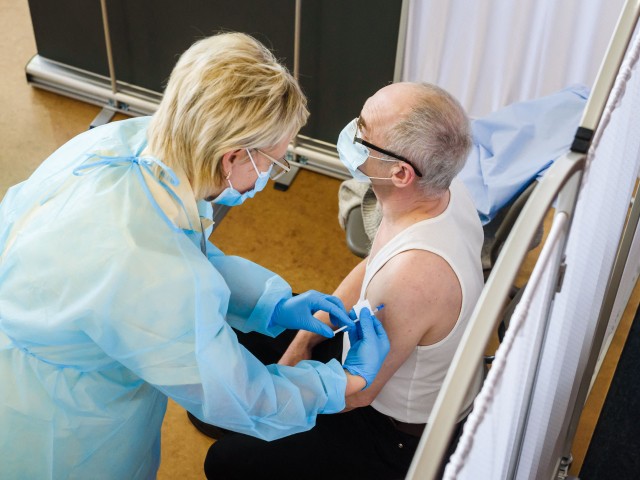World Health Organization (W.H.O.) chief Tedros Adhanom Ghebreyesus sounded his most optimistic note since the beginning of the Chinese coronavirus pandemic this week, telling reporters that “the end is in sight” and the world has “never been in a better position” to eradicate the disease.
Tedros made the remarks at a regular press briefing on Wednesday. While emphasizing the good news – every region the W.H.O. monitors documented a marked drop in confirmed coronavirus cases in the past week – Tedros argued that the world now needed to “run harder” and invest more heavily in anti-coronavirus policies, particularly vaccination, to ensure that no resurgence of the disease occurs.
Maria Van Kerkhove, the United Nations agency’s “technical lead” on the Chinese coronavirus pandemic, appeared to contradict Tedros somewhat during the same event, insisting that the disease was “circulating at a very intense level around the world” but expressing hope that, given the development of treatments and awareness on the part of health workers regarding identifying and addressing severe cases, “future waves of infection do not need to translate into future waves of death.”

World Health Organization (WHO) Technical lead head Covid-19 Maria Van Kerkhove attends a press conference organized at WHO headquarters in Geneva on July 3, 2020. (FABRICE COFFRINI/POOL/AFP via Getty Images)
“Last week, the number of weekly reported deaths from COVID-19 was the lowest since March 2020. We have never been in a better position to end the pandemic. We are not there yet but the end is in sight,” Tedros enthused.
“A marathon runner does not stop when the finish line comes into view. She runs harder, with all the energy she has left. So must we,” Tedros advised. “We can see the finish line. We are in a winning position but now is the worst time to stop running. Now is the time to run harder and make sure we cross the line and reap the rewards of all our hard work.”
The W.H.O. chief warned that “more variants, more deaths, more disruption and more uncertainty” were on the way without a significant escalation in mitigation efforts. The agency recently released a list of recommendations for countries that include pressuring the entirety of their populations to ingest coronavirus vaccine products, pervasive coronavirus testing, and stockpiling medical supplies in anticipation of case surges.
Tedros also urged governments to “communicate clearly with communities about any changes you make to your COVID-19 [Chinese coronavirus] policies, and why” and to “address misinformation.”
The W.H.O. chief used the opportunity to thank his team for the alleged success it has had in helping countries address the pandemic.
“Since New Year’s Eve 2019, and every day since then, W.H.O has worked without rest to warn the world and to give people everywhere the tools they need to stay safe, save lives, and keep societies functioning,” Tedros said. “We’ve helped countries to build oxygen plants and treatment centers. We’ve shipped millions of masks, gowns, tests, vaccines and more to countries that need them, all over the world.”
The Chinese coronavirus pandemic originated in Wuhan, China, in late 2019. On New Year’s Eve 2019, the government of Taiwan sent an email to W.H.O. officials warning that it had compiled intelligence on an infectious respiratory disease spreading in Wuhan and that the agency should consider preparing a response to a local outbreak. The W.H.O., under Chinese pressure, does not recognize Taiwan as a country and refuses to admit it as a member.

Security personnel stand guard outside the Wuhan Institute of Virology in Wuhan as members of the World Health Organization (WHO) team investigating the origins of the COVID-19 coronavirus make a visit to the institute in Wuhan on February 3, 2021. (HECTOR RETAMAL/AFP via Getty Images)
“Taiwan did report our concern on the severity of coronavirus last December to the W.H.O.,” the Taipei Economic and Cultural Representative Office (TECRO) told Breitbart News in March 2020. “But as a rule, our reporting is always a one-way street. W.H.O. mostly ignored our messages and never shared information as they do to other countries.”
The World Health Organization claimed that Chinese coronavirus was not a contagious disease as late as January 14, 2020.
Preliminary investigations conducted by the Chinese authorities have found no clear evidence of human-to-human transmission of the novel #coronavirus (2019-nCoV) identified in #Wuhan, #China🇳. pic.twitter.com/Fnl5P877VG
— World Health Organization (WHO) (@WHO) January 14, 2020
The W.H.O.’s latest “situation report” on the Chinese coronavirus pandemic, published on Monday, documented a 28-percent drop in the number of confirmed coronavirus cases around the world, comparing data from the week beginning September 5 to the week before.
“The number of new weekly deaths decreased by 22%, as compared to the previous week, with over 11, 000 fatalities reported,” the agency noted. Every region of the world included in the report documented a drop in cases. The most dramatic occurred in the “western Pacific,” a 36-percent case drop. The Americas collectively marked a 27-percent drop in cases.
Only one region in the world, Africa, documented an increase in deaths during the same time period, ten percent higher than the week prior.
W.H.O. statistics are based on government testing and documentation of cases, meaning the accuracy of the data is dependent on the competence and honesty of governments. Reports and, in some cases, self-admissions by rogue states, most prominently China and Iran, have revealed that many countries have severely undercounted their coronavirus cases. Others, particularly impoverished countries in Africa and Southeast Asia, have simply lacked the testing resources to fully document the scale of their local outbreaks.
Despite the drop in cases, Van Kerkhove said in response to a question about potential cases in America this winter that the virus is “circulating at a very intense level around the world.”
“The number of cases that are being reported to W.H.O. we know are an underestimate. So, we feel that there are far more cases that are actually circulating than are being reported to us,” she explained. “But those future waves of infection do not need to translate into future waves of death because we have tools that can prevent, people can prevent infections, can prevent transmissions and, critically, the use of vaccines and vaccination. Early use of antivirals can prevent people from developing severe disease and dying.”



COMMENTS
Please let us know if you're having issues with commenting.